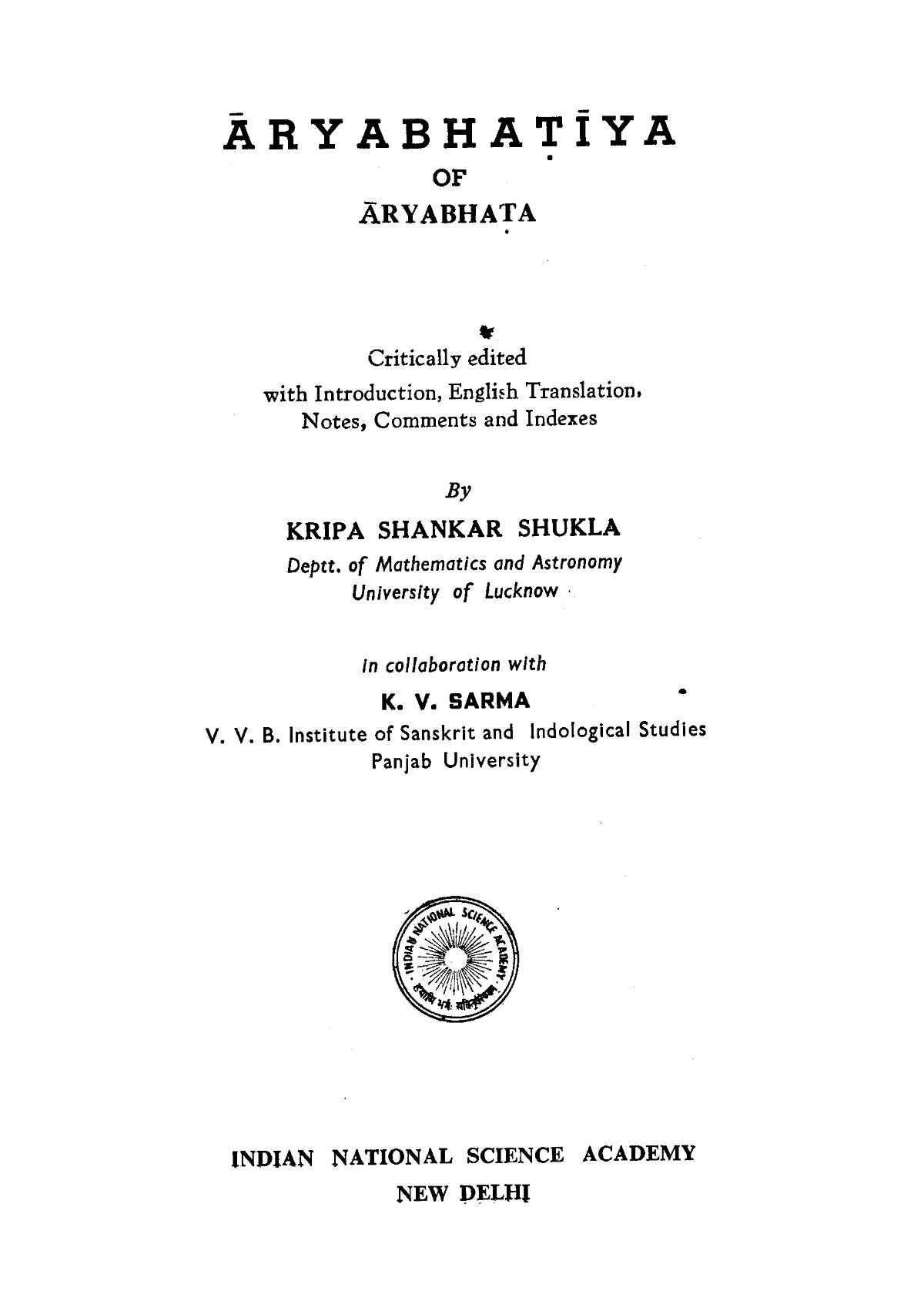The Aryabhatiya is one of the most significant works of the ancient Indian mathematician and astronomer, Aryabhata. Composed in 499 CE, this treatise is a key text in the history of mathematics and astronomy in India.
Aryabhatiya Book in PDF
The Aryabhatiya is divided into four chapters, each addressing different aspects of mathematics and astronomy:
- Gitikapada (Dashageetika): This section contains basic definitions and introductions to time calculations. It describes various units of time, such as kalpa, yuga, and so on. It also deals with the concept of large numbers and the cyclical nature of time, which is central to Indian cosmology.
- Ganitapada: This chapter focuses on arithmetic, algebra, and geometry. Aryabhata introduces concepts like square roots, cube roots, arithmetic progression, and geometric progression. He also discusses the methods of solving quadratic equations and calculating the area of a triangle. His work on trigonometry, particularly the sine table, was groundbreaking and laid the foundation for future mathematicians.
- Kalakriyapada: This section deals with the measurement of time and planetary motions. Aryabhata presents a heliocentric model of the solar system and discusses the rotation of the Earth on its axis, which explains the apparent motion of stars and planets. His calculation of the length of a year was remarkably accurate for his time.
- Golapada: The final chapter is dedicated to spherical astronomy. Aryabhata provides methods to calculate the positions of planets and the occurrence of solar and lunar eclipses. His work in this area was highly influential in the development of astronomical knowledge in India and beyond.


